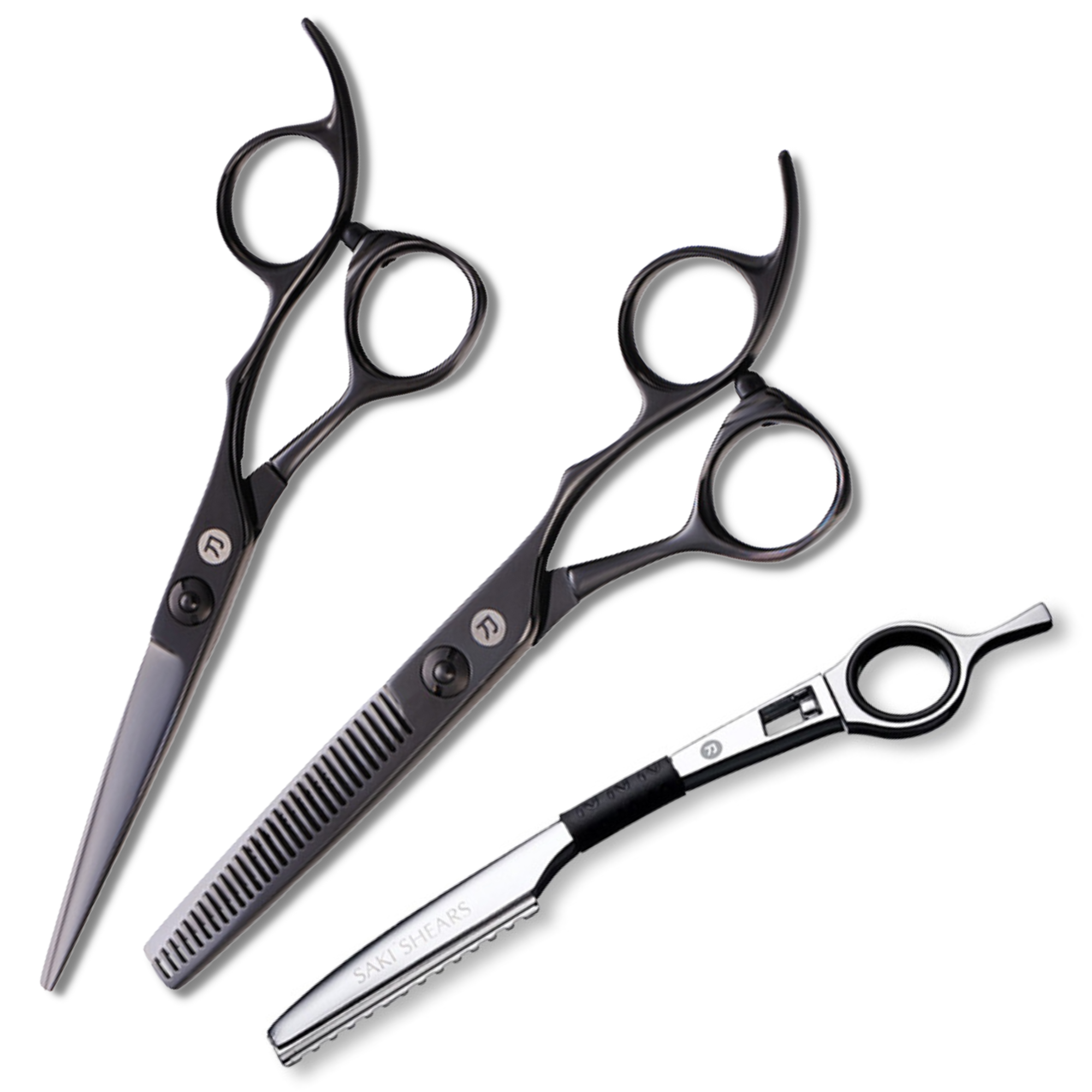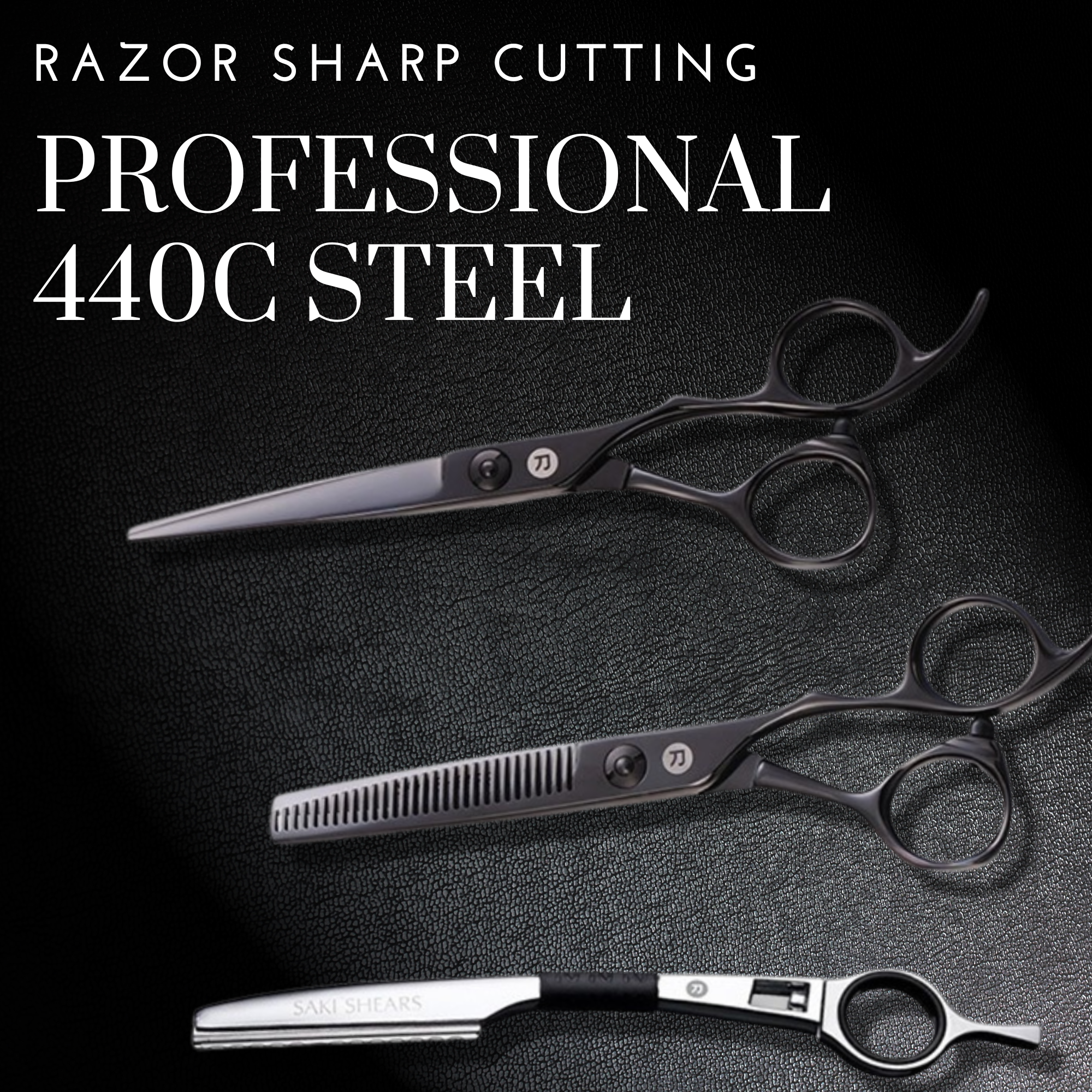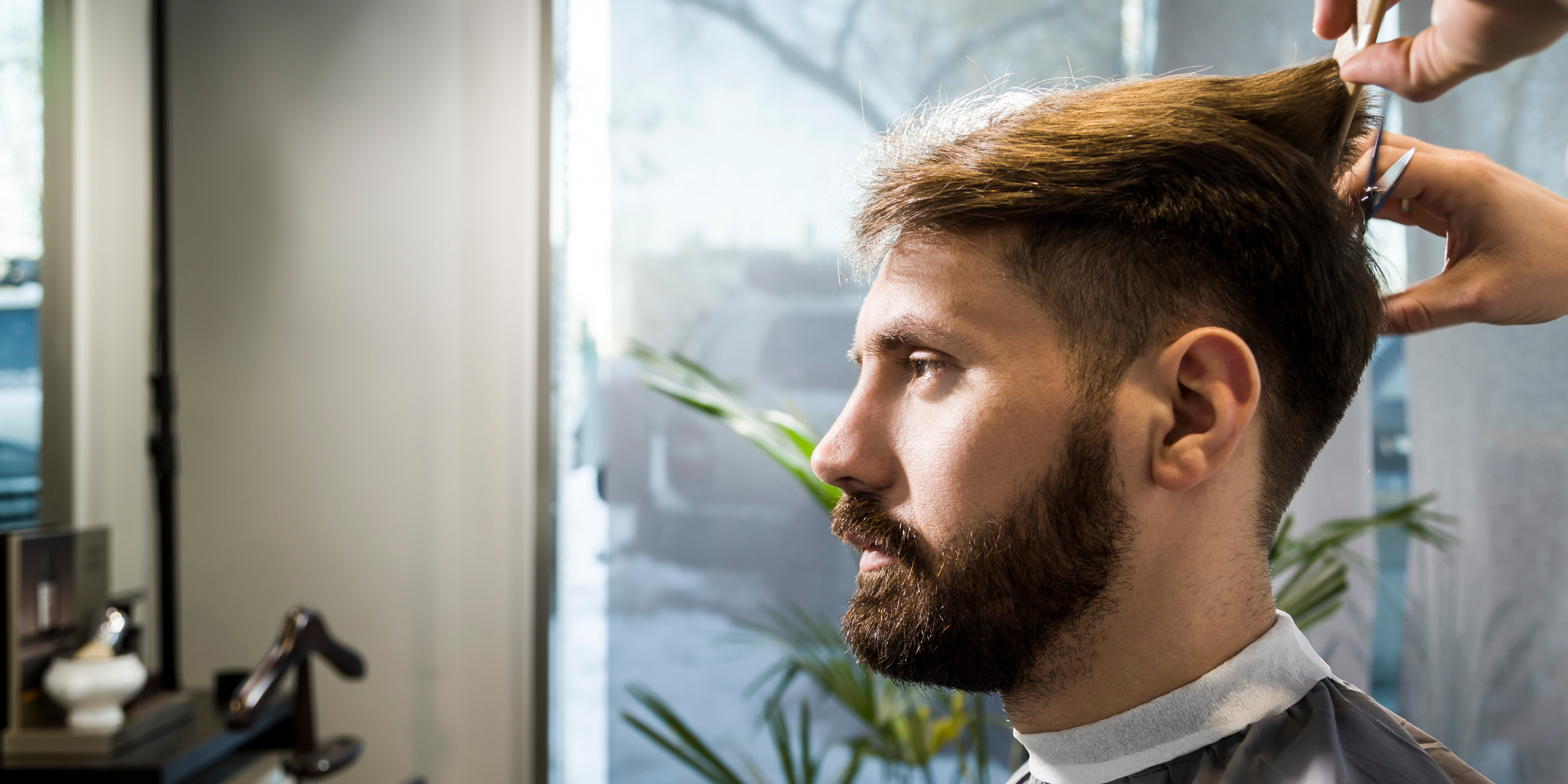Decoding Hair Lingo: A Comprehensive Glossary of Salon Terms
Stepping into a hair salon can sometimes feel like entering a foreign land with a language all its own. Amidst the buzz of blow dryers and the snip of scissors, you might overhear stylists discussing various hair treatments and techniques, leaving you feeling utterly lost. But fear not, as we embark on a journey to decode the hair lingo and create a comprehensive glossary of salon terms that will empower you to navigate your hair care experiences with confidence and clarity.
- Cut and Style Terminology:
The foundation of every great hairstyle lies in the cut and style. Understanding the terminology used by hairdressers will help you effectively communicate your desired look and ensure you leave the salon with a smile on your face.
a) Layers: Layers involve cutting the hair at different lengths, adding dimension and texture to the overall look. There are various layering techniques, such as long layers, face-framing layers, and choppy layers, each creating a unique effect.
b) Bob: A timeless and versatile haircut, the bob is characterized by its straight or slightly curved edges and can be customized to suit different face shapes and hair textures.
c) Pixie: Short and daring, the pixie cut features close-cropped sides and back, with longer layers on top. It's a chic choice for those seeking a low-maintenance and bold hairstyle.
d) Blunt Cut: This haircut involves cutting the hair in a straight line with no layers, resulting in a sharp and clean look that's ideal for thick hair.
e) Bangs (Fringe): Bangs refer to the front section of hair that falls over the forehead. From classic blunt bangs to wispy, side-swept bangs, they can transform the appearance of a hairstyle dramatically.
- Coloring Techniques:
Hair coloring has evolved into an art form, with various techniques that can create stunning visual effects and enhance your overall look. Familiarizing yourself with these coloring techniques will help you communicate your desired hair color with your stylist effectively.
a) Highlights: Highlights involve lightening small sections of hair to add dimension and create contrast. They can be applied using various methods, such as foil highlights, balayage, or ombre, each resulting in distinct looks.
b) Lowlights: In contrast to highlights, lowlights add darker shades to create depth and richness in the hair. This technique is often used to complement highlights or add dimension to a single hair color.
c) All-Over Color: All-over color refers to applying a single shade of hair dye to the entire head, covering both the roots and existing color. It's a popular choice for those looking for a complete hair color change.
d) Root Touch-Up: This coloring technique targets only the roots of the hair, camouflaging new growth and extending the time between full-color treatments.
e) Balayage: A French term meaning "to sweep," balayage involves hand-painting highlights onto the hair, resulting in a natural, sun-kissed effect.
- Styling Products and Tools:
The vast array of styling products and tools available can be overwhelming. Understanding their purposes and how to use them will help you achieve salon-quality hairstyles at home.
a) Hairspray: Hairspray is used to hold hairstyles in place, providing varying degrees of hold from light to firm.
b) Mousse: Mousse adds volume and texture to the hair while providing a flexible hold.
c) Hair Serum: Hair serums are applied to damp or dry hair to reduce frizz, add shine, and improve manageability.
d) Flat Iron: A flat iron is a hairstyling tool used to straighten the hair or create sleek looks.
e) Curling Wand: This tool is used to create beautiful curls and waves without a clamp, allowing for more natural-looking results.
- Hair Treatments and Therapies:
Aside from regular haircuts and coloring, various treatments and therapies can help improve the health and appearance of your hair. Understanding the benefits of these treatments will enable you to choose the ones that best suit your needs.
a) Hair Mask: Hair masks are deep conditioning treatments that nourish and hydrate the hair, providing intense moisture to dry and damaged strands.
b) Keratin Treatment: This semi-permanent hair straightening treatment infuses keratin into the hair, reducing frizz and curl, and leaving the hair smoother and more manageable.
c) Scalp Massage: A scalp massage not only feels incredibly relaxing but also stimulates blood circulation to the scalp, promoting hair growth and overall scalp health.
d) Hot Oil Treatment: Hot oil treatments involve applying warmed natural oils, such as coconut or olive oil, to the hair to moisturize and strengthen the strands.
e) Hair Spa: A hair spa is a holistic treatment that includes deep conditioning, scalp massage, and other therapeutic steps, designed to rejuvenate and revitalize both hair and scalp.
- Texture and Curl Patterns:
Understanding hair texture and curl patterns will help you embrace your natural hair type and make informed decisions about styling and products.
a) Hair Texture: Hair texture refers to the thickness and diameter of individual hair strands and is commonly classified as fine, medium, or coarse.
b) Straight Hair: Straight hair lacks prominent curls or waves and falls smoothly from the roots to the ends.
c) Wavy Hair: Wavy hair features loose, gentle waves that add volume and texture to the hair.
d) Curly Hair: Curly hair forms well-defined curls or spirals, and it can vary in tightness, ranging from loose to kinky curls.
e) Coily Hair: Coily hair, also known as kinky hair, has tight, springy curls that form a distinct zig-zag pattern.
- Salon Services and Pricing:
Navigating salon services and understanding pricing structures will ensure you have a seamless salon experience and avoid any unexpected costs.
a) Consultation: A consultation is an essential first step before any major hair service, where you discuss your goals with the stylist and determine the best approach.
b) Blowout: A blowout involves washing, blow-drying, and styling the hair to create a polished and sleek finish.
c) Updo: An updo is a styled hairstyle where the hair is pulled up and secured elegantly, often for special occasions.
d) Hair Extensions: Hair extensions are used to add length or volume to the hair temporarily and are available in various types, such as clip-ins, tape-ins, or sew-ins.
e) Price Structure: Salon pricing may vary based on factors such as hair length, thickness, and the complexity of the service. Understanding the pricing structure will help you budget accordingly.
- Hair Styling Techniques:
Mastering different hair styling techniques can elevate your hairstyling game and offer versatility in your everyday look.
a) Sleek Straight: Achieve a sleek and polished look by using a flat iron to straighten the hair.
b) Beach Waves: Create effortless beach waves with a curling wand or by braiding damp hair overnight.
c) Top Knot: A top knot is a simple yet chic updo created by twisting and securing the hair into a bun on the crown of the head.
d) French Braid: The French braid is a classic and elegant braiding technique that adds sophistication to any hairstyle.
e) Half-Up, Half-Down: This hairstyle combines elements of both updos and loose hair, offering a balance between polished and casual.
- Haircut and Hairstyle Inspiration:
Drawing inspiration from haircuts and hairstyles can help you discover new looks that suit your personality and lifestyle.
a) Celebrity Hairstyles: Explore the latest trends and iconic hairstyles worn by your favorite celebrities, from short crops to glamorous red carpet looks.
b) Runway Hair Trends: Look to the fashion runways for cutting-edge hairstyle inspiration, as designers often showcase innovative hair trends during their shows.
c) Vintage Hairstyles: Retro hairstyles from different eras, such as finger waves from the 1920s or voluminous curls from the 1950s, can add a touch of timeless elegance to your look.
d) Hairstyles for Different Occasions: Find the perfect hairstyle for every occasion, whether it's a casual day out, a formal event, or a romantic date night.
e) Seasonal Hairstyles: Adapt your hairstyles to the changing seasons, such as beachy waves for summer or cozy updos for winter.
- Haircare Routine for Different Hair Types:
Understanding your hair type and its specific needs will allow you to tailor your hair care routine for optimal results.
a) Fine Hair: Learn how to add volume and maintain the health of fine hair without weighing it down.
b) Thick Hair: Manage and style thick hair effectively, ensuring it stays under control and retains its natural bounce.
c) Curly Hair: Embrace and care for your curls, emphasizing their beauty and reducing frizz.
d) Chemically Treated Hair: Discover the best practices for caring for hair that has undergone chemical treatments like coloring, relaxing, or perming.
e) Transitioning Hair: If you're transitioning from chemically treated to natural hair, find tips for managing the two textures during the process.
- DIY Hair Treatments and Hacks:
Explore easy and effective do-it-yourself hair treatments and hacks that can be made with ingredients from your kitchen or natural products.
a) DIY Hair Masks: Nourish your hair with homemade masks, using ingredients like avocado, honey, and yogurt.
b) Overnight Hair Treatments: Try overnight treatments for deep conditioning or enhancing natural curls.
c) Quick Hairstyling Hacks: Learn time-saving styling tips for busy mornings or last-minute outings.
d) Natural Hair Dyes: Experiment with natural alternatives for hair coloring, like henna or herbal rinses.
e) Refreshing Second-Day Hair: Revive and style your hair on non-wash days with dry shampoo and other quick fixes.
With this comprehensive glossary of salon terms and a deeper understanding of various hair care practices, you can confidently communicate with your stylist, experiment with new hairstyles, and embrace the unique beauty of your hair. Remember, learning about different techniques and products is a journey, and discovering what works best for your hair will lead to a happier and more fulfilling hair care experience.
So, go ahead and try out the tips, tricks, and treatments mentioned here, and let your hair speak volumes about your style and personality.
Salon Terms Related to Hair Cutting and Thinning Shears
- Hair Cutting Shears:
Hair cutting shears, also known as scissors, are an essential tool for every hairstylist. Understanding the different types of hair cutting shears and their uses will give you insights into the artistry behind a well-executed haircut.
a) Straight Blade Shears: Straight blade shears are the most common type of hair cutting shears. They feature two straight blades with sharp edges, designed to cut hair evenly and precisely.
b) Texturizing Shears: Texturizing shears, also known as thinning shears or texturizers, have notched teeth on one or both blades. Stylists use them to create texture and remove bulk from the hair without altering the overall length.
c) Swivel Shears: Swivel shears have a unique rotating thumb handle that allows the stylist to cut from different angles comfortably. They are particularly helpful for reducing strain on the hand and wrist during extended hair cutting sessions.
d) Offset Shears: Offset shears have an asymmetrical design with one handle shorter than the other. This ergonomic design ensures a more natural hand position, reducing fatigue and promoting precision during cutting.
e) Convex Blade Shears: Convex blade shears have razor-sharp edges, and their blades have a slight curve. These shears offer an ultra-smooth cutting action and are favored by many experienced stylists for their precision.
- Thinning Shears:
Thinning shears, as mentioned earlier, are also known as texturizing shears. They have a unique purpose in hair cutting, allowing stylists to add texture and remove volume from the hair.
a) Teeth Configuration: Thinning shears come with various teeth configurations, such as single-tooth, double-tooth, or triple-tooth. The number of teeth and their spacing determine the amount of hair that is removed with each cut. Double-tooth and triple-tooth shears are ideal for more aggressive texturizing, while single-tooth shears offer a softer effect.
b) Texturizing Techniques: Stylists use thinning shears in a variety of techniques to achieve different results. For instance, point-cutting involves using the tips of the shears to create texture, while slide-cutting is a gliding motion along the hair shaft to remove bulk.
c) Blending and Layering: Thinning shears are valuable for blending and layering techniques. By strategically thinning certain sections of the hair, stylists can create seamless transitions between different lengths and add movement to the hairstyle.
d) Texture for Thick Hair: Thinning shears are especially useful for clients with thick hair who desire a more lightweight and manageable style. The strategic use of thinning shears can reduce excessive volume and make styling easier for such hair types.
e) Caring for Thinning Shears: Proper care is essential for maintaining the effectiveness and longevity of thinning shears. Regular cleaning and lubrication, along with professional sharpening, will ensure they remain in optimal condition for precise texturizing.
Understanding the different types of hair cutting shears and the versatility of thinning shears will not only give you a newfound appreciation for the artistry of hair cutting but also empower you to have informed discussions with your stylist about the best cutting techniques for your desired look.
Vendita di cesoie saki








Il set Saki Katana Hair Cutting è la coppia perfetta! Realizzato a mano e costruito utilizzando acciaio inossidabile giapponese e uno spesso rivestimento in titanio nero, il Saki Katana Hair Scissor e Thinning Shear offrono la massima durata per un paio di cesoie per capelli di lunga durata su cui puoi contare. Il set Saki Katana include le nostre cesoie premium per il taglio dei capelli, le cesoie per diradare i capelli, il rasoio e la custodia in pelle.
Opzioni:
Il set da 6 "include le cesoie da taglio Katana da 6", le cesoie da 6 ", il rasoio girevole e la custodia in pelle.
Il set da 7 "include le cesoie da taglio Katana da 7", le cesoie da 6 ", il rasoio girevole e una custodia in pelle.
Garanzia Gaki Katana Garanzia: Coperto da Cesoie Saki garanzia a vita
Cesoie per taglio Saki Katana
Le cesoie per capelli Saki Katana presentano un bordo convesso e una lama in acciaio inossidabile a tripla levigata per un taglio preciso e regolare, mentre la maniglia della gru extra lunga e offset combatte la fatica e offre il massimo del comfort. Ideale per il taglio smussato, bagnato e asciutto.Caratteristiche:
- Fatto a mano per la precisione
- Materiale: acciaio inossidabile giapponese
- Lama: Lama convessa stile giapponese con durezza 60-61 HRC
- Dimensione dell'anello: Regolabile
- Due pezzi saldati
- Rivestimento nero: rivestimento in titanio
- Spessore del rivestimento: 1,5 um
- Dimensioni: 6 pollici
Cesoie per diradamento Saki Katana
Saki Katana Thinning Shear è perfetto per diradare, miscelare e/o aggiungere consistenza a qualsiasi acconciatura con 30 denti e lame spesse e corte della spada. Offset, la maniglia extra-lunga della gru e le dimensioni dell'anello regolabile offrono il massimo comfort e supporto durante lo styling.
Caratteristiche:
- Fatto a mano per la precisione
- Materiale: acciaio inossidabile giapponese
- Lama: Lama convessa stile giapponese con durezza 60-61 HRC
- Dimensione dell'anello: Regolabile
- Due pezzi saldati
- Rivestimento nero: rivestimento in titanio
- Spessore del rivestimento: 1,5 um
- Dimensioni: 6 pollici/30 denti
Il tuo set Saki Katana include:
- 1 cesoie per capelli saki katana fatte a mano
- 1 cesoie per diradamento Saki Katana fatte a mano
- 1 rasoio girevole fatto a mano
- 1 Custodia
- Garanzia a vita
La linea di cesoie per capelli Katana Shears Saki è p Erfetto per maestri barbieri, hair stylist avanzati e parrucchieri professionisti.





